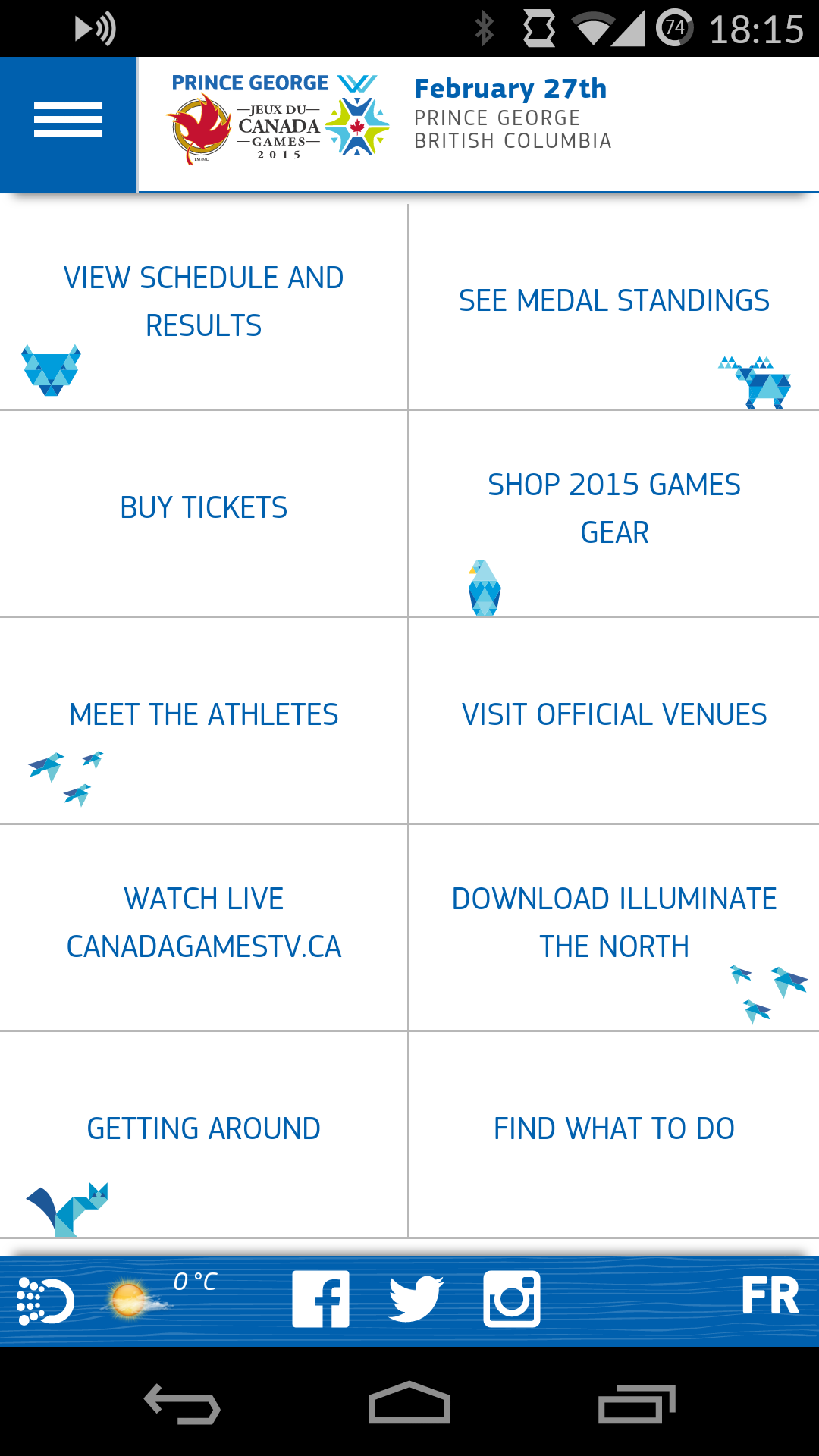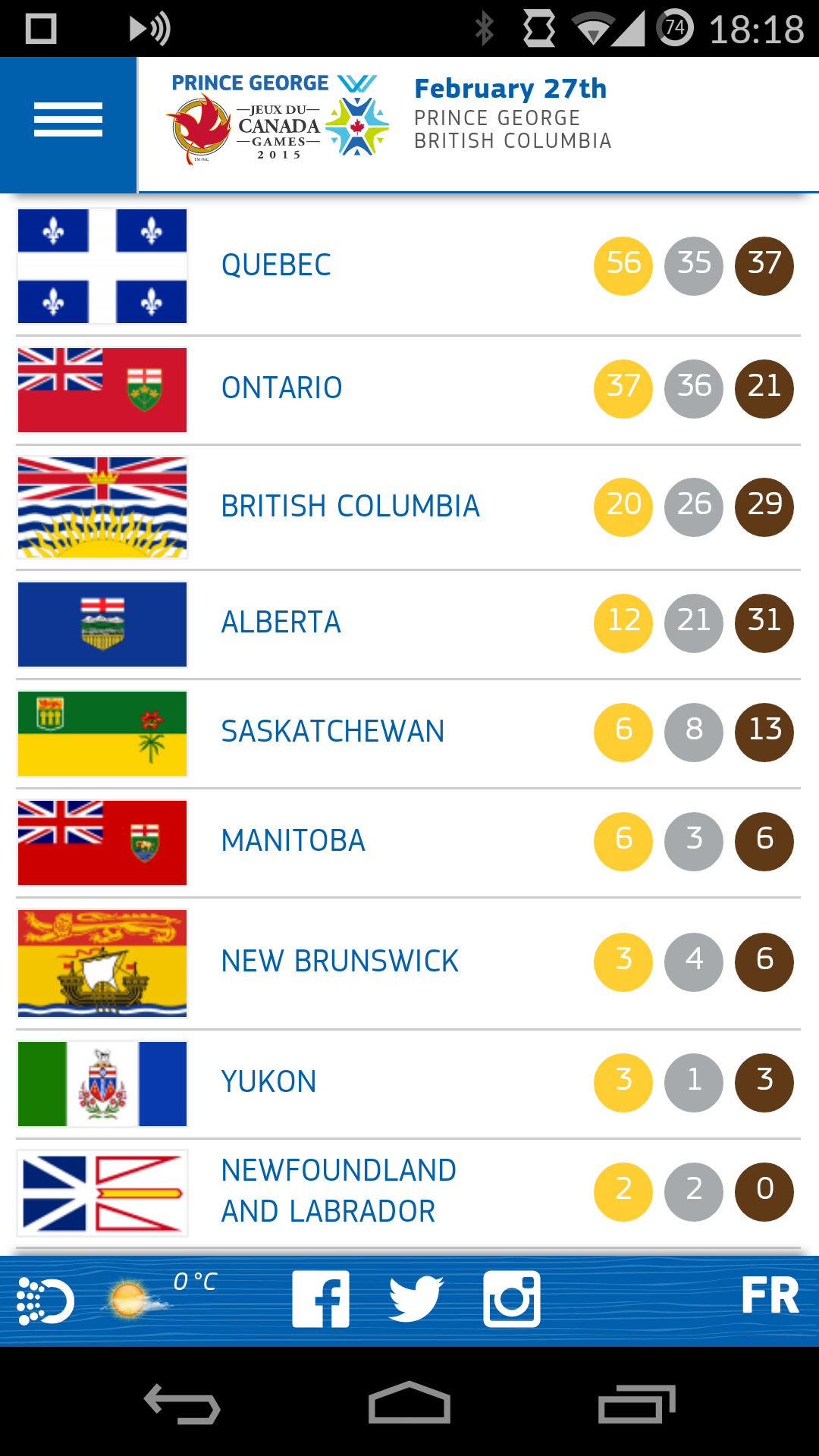There’s responsive web design, and then there’s Opin.
While many web developers boast proficiency in Drupal, and many more are capable of making their products responsive few can say that the their designated mobile site goes from five inches to fifteen feet.
That is what Opin, an Ottawa-based web developer has managed to do with their work on the Canada Winter Games, currently underway in Prince George, BC. While the event’s desktop page is a separate entity in that it has different code and functionality, the mobile site is able to go from a handheld device to digital signage displays stationed around sporting facilities.
According to the company, this has been largely thanks to the capabilities of its content-management framework of choice.
“It would have been either impossible or very hard to do without Drupal,” said Steve Lavigne, who was senior software engineer on the project. Compared to WordPress, which Lavigne associated more with “simple blogs and stuff”, Drupal is more of an “enterprise content management system (CMS),” he said.
While not as popular as WordPress, the CMS is gaining traction, according to Lavigne, and has been employed by government agencies, such as WhiteHouse.gov and the Australian government.
This enterprise appeal has helped Opin secure the contract with Canada Games.
By the time the Games council entered into discussions with Opin about building a new site, the developer already had some virtual presence in Prince George through their work with the University of Northern British Columbia (UNBC).
The company of about 30 or so employees was able to pull off the project with less than a handful of staff, and persuaded Canada Games to go with a mobile site rather than a native app.
“Disadvantages of having a mobile app is that it costs substantially more in terms of the people that need to get involved, registration in app stores, and the need to build separate apps for Android, iOS and Blackberry,” said Lavigne, in addition to the different API’s found just on the Android platform itself.
In addition, he explained that while a native app would have better control of device functions such as the camera, those capabilities were not necessary in this case.
Not to mention, the static, app-like layout of the mobile website can detect when it is being displayed on the Sony digital signage employed by the games, and becomes a slideshow of sorts, cycling through useful information such as schedules, medal counts, and ads.
It is also marketed towards attendees of the events and eliminates much of the background info found on the desktop version.
So far, all versions of the the Canada Games websites have held up. According to Lavigne, in the first few days of the events, the mobile site alone saw an average of 10,000 people, which, to him, came as a surprise.
“I’m proud of the whole system,” said Lavigne, adding that Opin is already in talks with Canada Games to continue its work for the next round of events to be hosted in Winnipeg, MB in summer 2017. “We’re proud to get to be part of it, helping save money, manage data, do it easily, effectively killing two birds with one stone.”




